Traditional bathrooms reflect a love for heritage and craftsmanship, where every element tells a quiet story of timeless design. It is inspired by older periods such as Victorian and Edwardian times, but it still works well in modern homes. This style often features elements such as freestanding baths, ceramic sinks, crosshead taps, and soft, neutral colours.
The aim is to create a calm and elegant space that feels warm and welcoming. In this blog, we will guide you through the key steps and design choices to help you create a traditional bathroom that is both practical and full of character, regardless of the size of your space or budget.
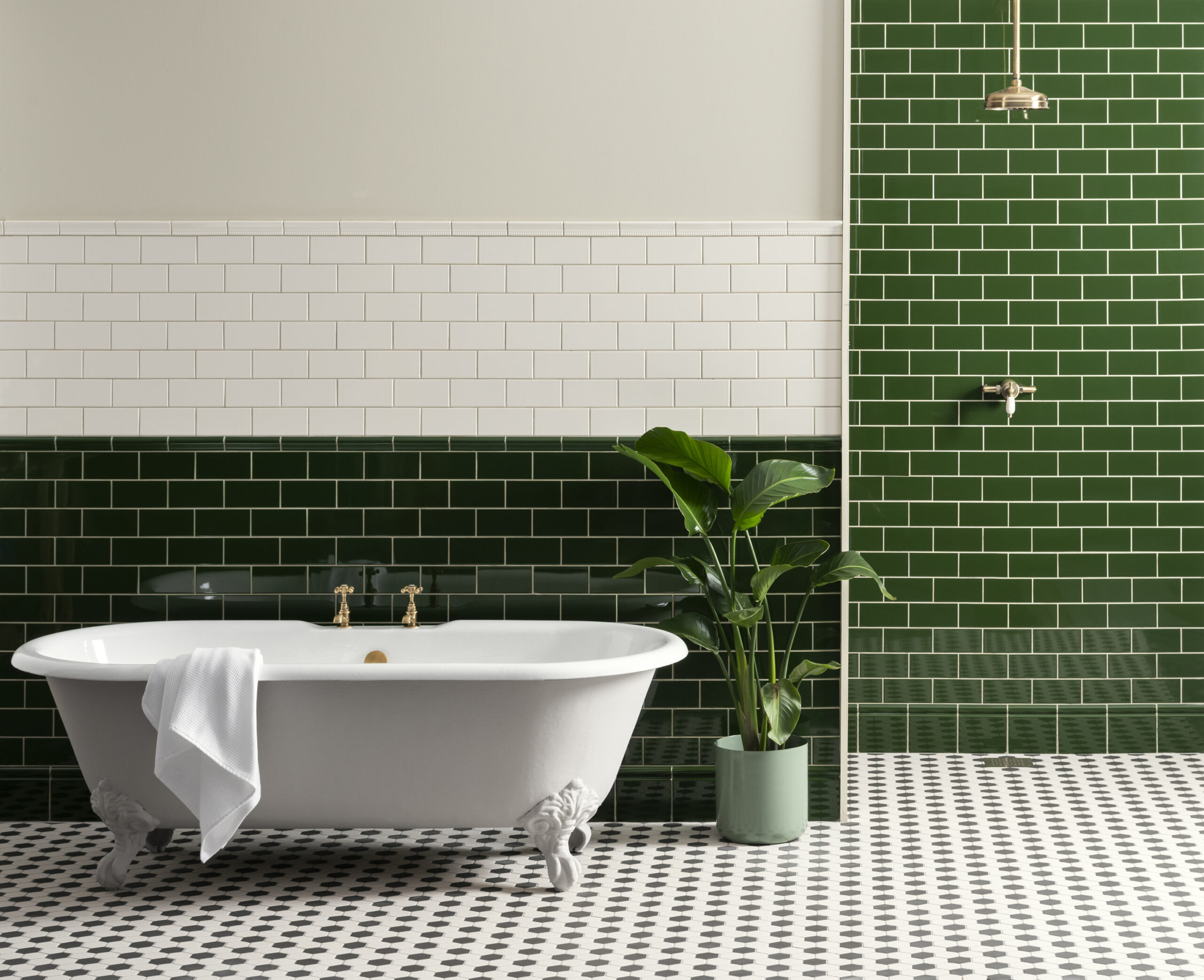
Classic Colour Schemes For Traditional Bathrooms
When designing a traditional bathroom, the colour palette plays a big role in setting the tone. The right palette can bring out the classic features and make the space feel warm and inviting. This style of bathroom usually uses soft, neutral colours that never go out of style. Whites, creams, and light greys are popular choices because they help the room feel clean and open. These shades also complement natural materials such as marble, wood, and porcelain.
If you want to create a more layered or expressive palette, try gentle pastels such as pale blue, sage green or dusty pink. These colours bring a soft touch of personality while keeping the classic look. For a richer, more dramatic feel, consider darker tones like navy, deep green, or charcoal, especially when paired with white tiles or fittings.
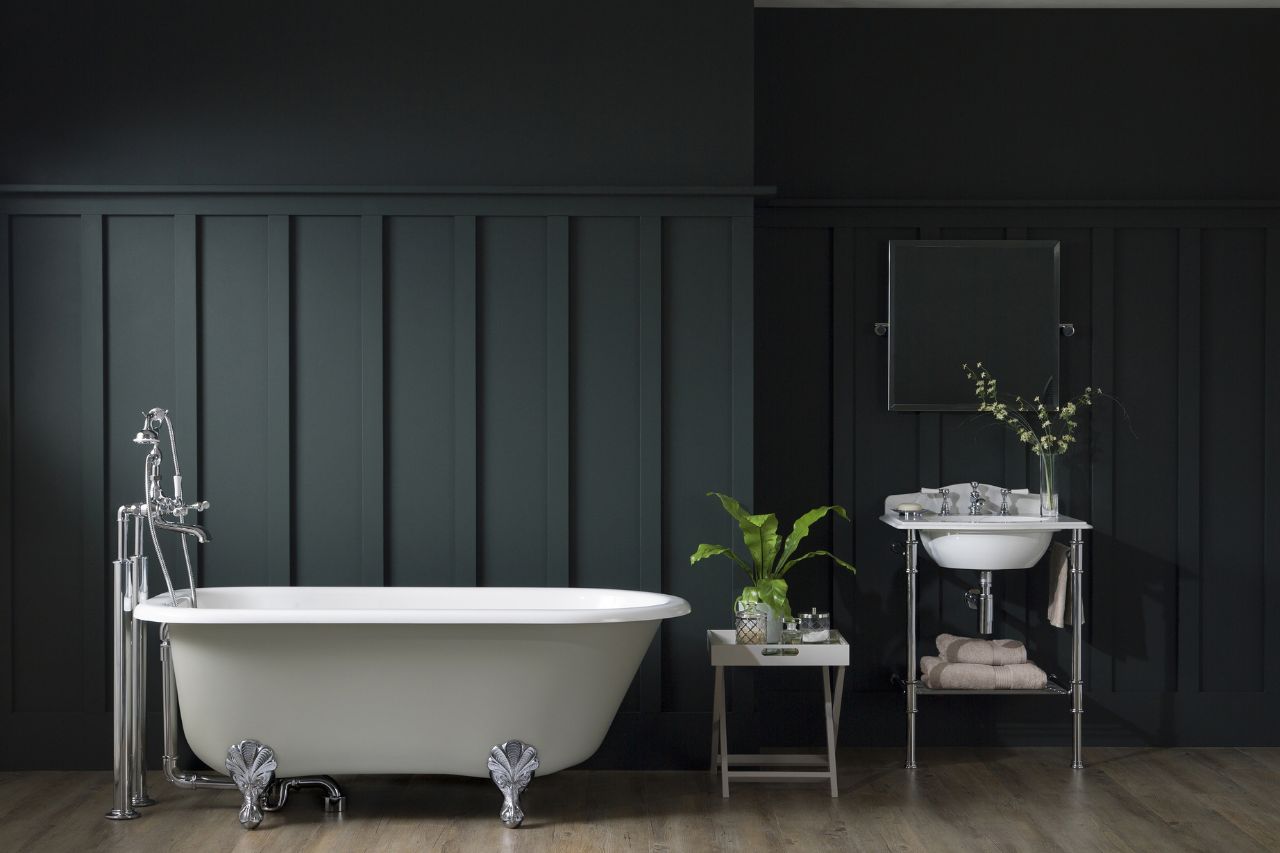
Material Guide For Classic Bathrooms
The materials used in traditional bathrooms should be carefully selected for their durability, authenticity, and classic appeal. Marble is a popular choice for floors, countertops and wall features, adding a sense of luxury with its soft patterns and unique look. Ceramic and porcelain tiles are also common, especially white metro tiles for walls and patterned or checkerboard tiles for floors. Wood is used for vanity units, shelving and wall panelling.
Painted wood in soft tones, such as cream or sage green, gives a fresh feel, while dark-stained wood brings a more formal style. Other materials, such as cast iron with enamel, are used for bathtubs. Natural stones, like limestone or travertine, can be used for floors, basins, and window sills, offering subtle patterns and neutral colours.
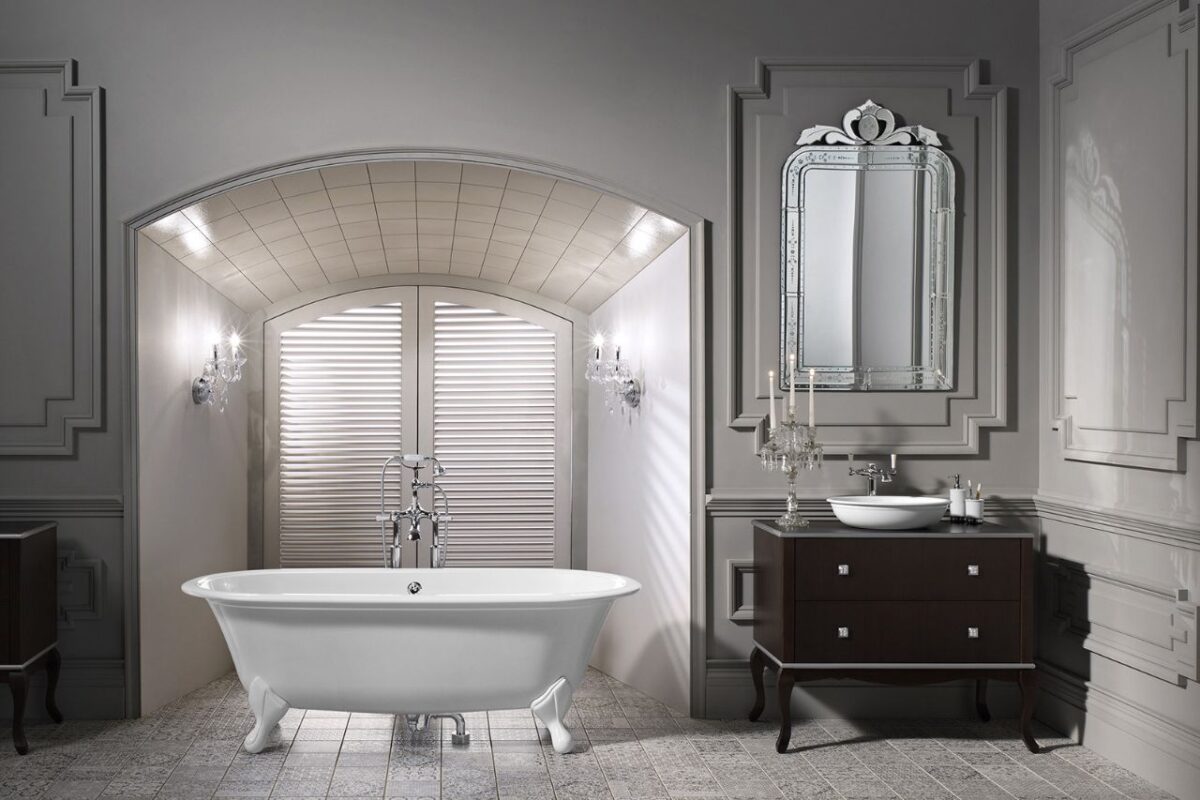
Choosing The Right Finishes
Finishes play a key role in giving a traditional bathroom its character and polished appearance. Unlike modern styles, which often favour sleek or minimalist looks, traditional bathrooms are defined by their use of soft, elegant finishes that highlight craftsmanship and attention to detail.
Polished chrome is a popular choice for taps, shower fittings, towel rails and light fixtures. It reflects light well and pairs neatly with both light and dark colour schemes. For a warmer, aged look, brushed or antique brass offers a vintage feel and works beautifully with cream, green or pastel tones.
Nickel is another classic option, offering a slightly softer shine than chrome and a more understated elegance. Paint finishes also make a difference. For woodwork such as panelling, shelves, or vanity units, a matt or eggshell paint is ideal.
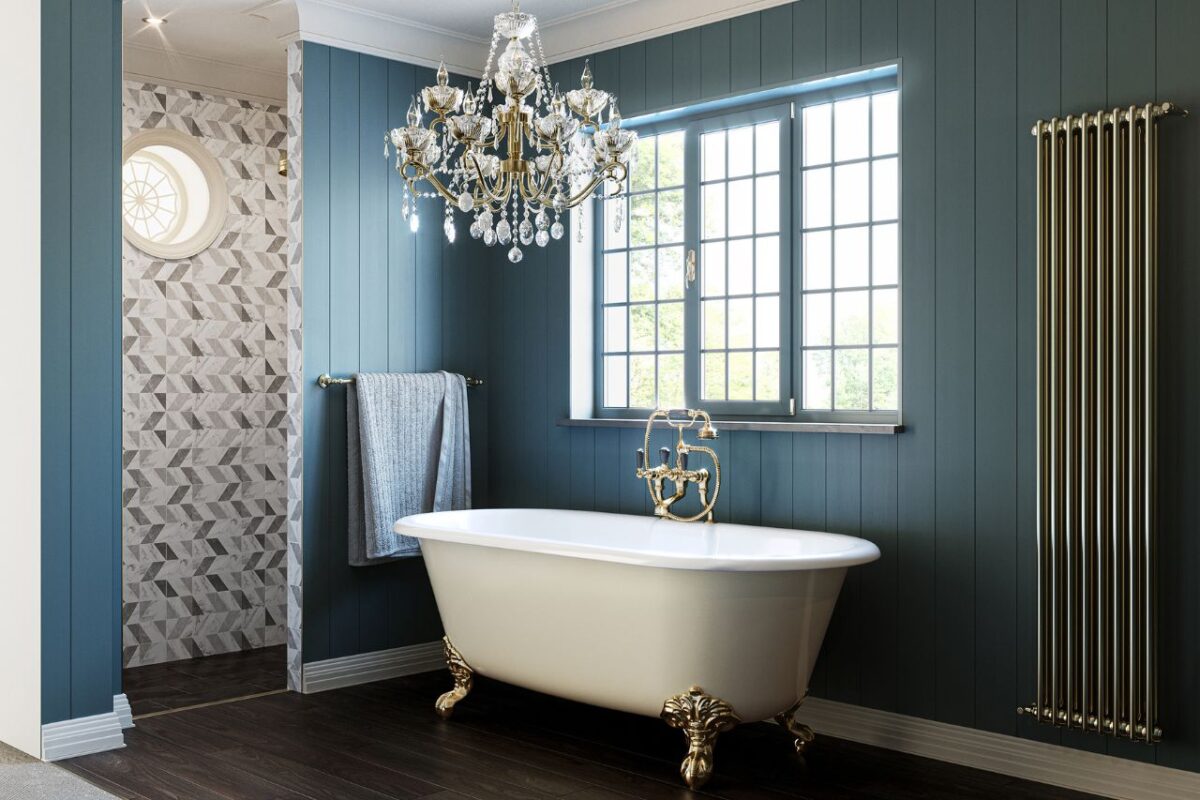
Fixture and Fittings
Fixtures are the primary features that comprise the structure of your bathroom, and in a traditional style, they often reflect classic designs from past eras. A freestanding bath is one of the most iconic pieces. Adding a clawfoot bath instantly brings character to a traditional bathroom, infusing it with a touch of old-world elegance.
Pedestal sinks or console basins with exposed pipework are also widespread and help create a vintage feel. For toilets, a traditional close-coupled design or a high-level cistern with a pull chain brings strong character. These classic fixtures are not only beautiful but also built to last, offering both charm and durability.
Fittings include all the smaller parts that complete the space, such as taps, showerheads, towel rails and handles. In a traditional bathroom, taps often have crosshead or lever designs and are usually in polished chrome, brushed brass or nickel. Wall-mounted taps and exposed shower valves add to the vintage feel. Heated towel rails in a classic style offer both warmth and elegance. To complete the look, add toilet roll holders, robe hooks and cabinet knobs in matching finishes.
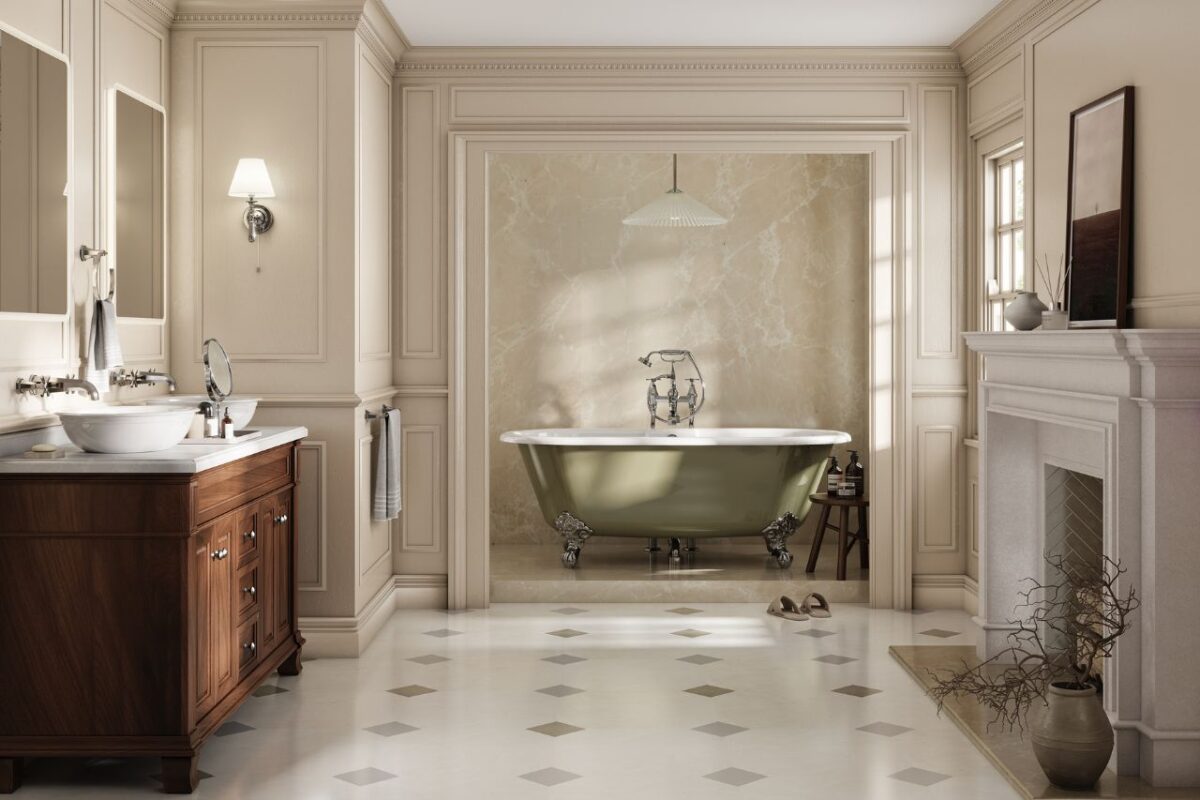
Traditional Bathroom Furniture
Furniture in a traditional bathroom should be constructed from high-quality materials, such as solid wood, with features like panelled doors, turned legs, or moulded edges. Vanity units often look like freestanding pieces of furniture, sometimes with turned legs or panelled doors. Painted wood in soft tones such as white, cream or pale grey is a popular choice, though darker stained wood can also give a more formal look.
If you are looking for something more unique, consider repurposing an old chest of drawers or sideboard into a vanity unit. A matching mirror with a wooden or framed border above the sink helps to complete the look and add balance to the space.

Elegant Lighting for a Timeless Look
Lighting in a traditional bathroom should create a soft, warm and welcoming ambience. Avoid harsh or overly modern lights. Instead, go for classic designs that suit the timeless look of the space. Wall sconces are a popular choice and are often placed on either side of a mirror for balanced lighting. These can come with frosted glass shades, metal arms or porcelain bases to match the rest of the bathroom fittings. Ceiling lights, such as small chandeliers or pendant lamps with antique-style finishes, also add a touch of elegance and style.
Good lighting in a classic bathroom is achieved by combining different types of light. A mix of overhead lighting, wall lights and soft accent lighting creates a warm and layered look. For example, a dimmable ceiling light can create a relaxed mood, while task lighting around the mirror helps with tasks such as shaving or applying makeup. Consider using warm white bulbs instead of bright white ones, as they provide a softer glow that complements the classic style.
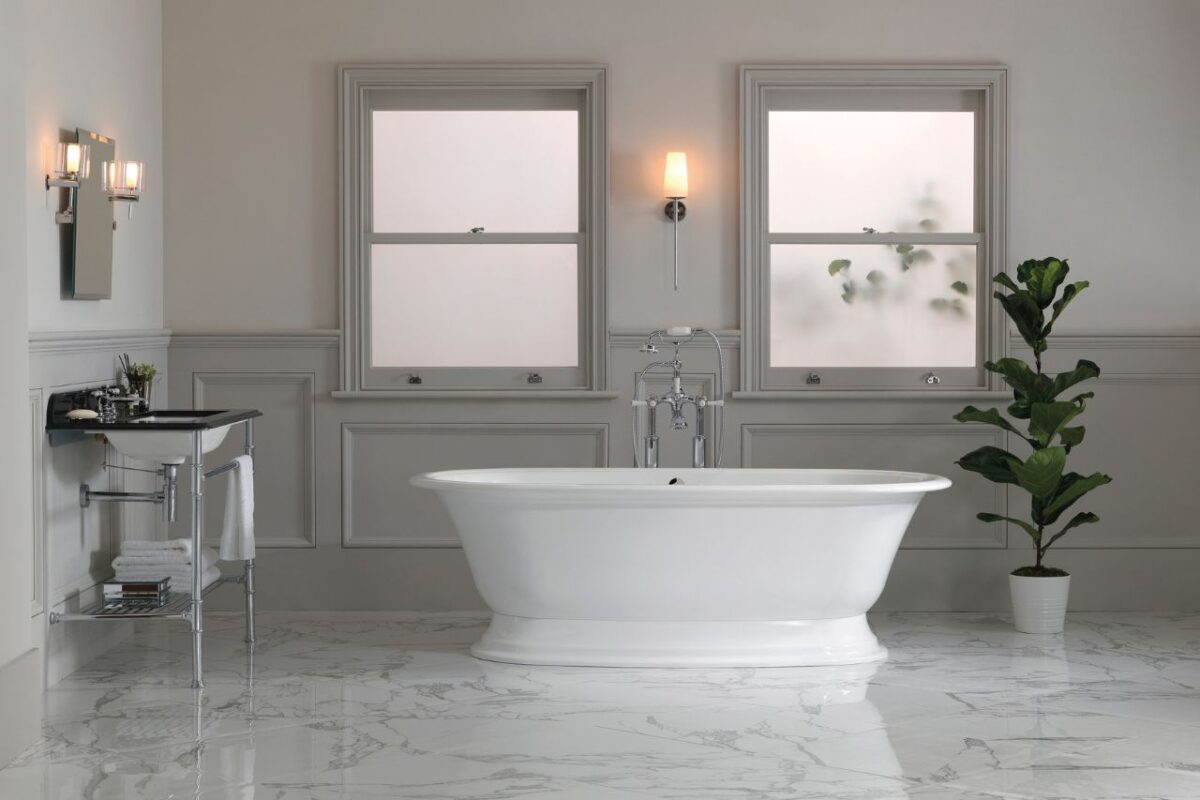
Choosing Accessories For Your Traditional Bathroom
Accessories are the final touches that bring a traditional bathroom to life. They should feel classic, elegant and in tune with the overall style of the space. Consider using porcelain soap dishes, glass jars, ceramic toothbrush holders, and brass or chrome towel rings. Framed mirrors with decorative edges or a touch of antique finish help add unique style and balance. Wall art, such as floral prints or vintage-style illustrations, can also add character without taking up space. Keep accessories classic and straightforward to avoid a cluttered or modern look.
Traditional bathrooms feel calm, neat and welcoming, and styling plays a big part in this. Use soft, fluffy towels in neutral shades and display them neatly on open shelves or towel rails. Add a small stool or wooden bench for extra comfort. A woven basket for laundry or extra toilet paper helps with storage while adding texture. Candles, reed diffusers, or a small vase of fresh flowers can add a gentle, lived-in touch to the space.
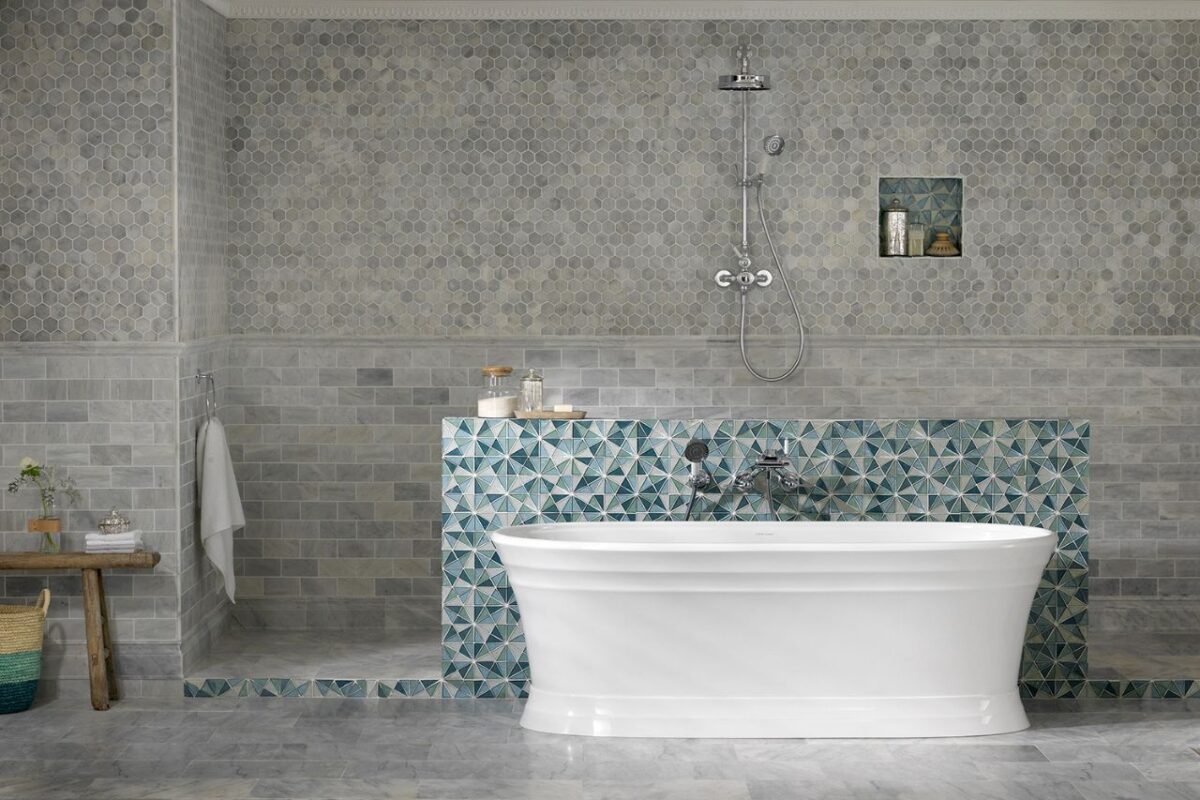
Choosing The Right Flooring
Flooring is a key element of this bathroom style and should feel both practical and in keeping with the overall aesthetic. Traditional bathrooms often use ceramic, porcelain, or natural stone tiles, which are hard-wearing and water-resistant. A popular choice is black and white checkerboard tiles, which give a bold, vintage look. Patterned tiles with floral or geometric designs also work well and can add a touch of personality without feeling too modern. The herringbone tile layout brings a subtle touch of craftsmanship to traditional bathrooms, offering a refined design pattern.
For a softer, more natural feel, stone floors like marble, limestone or travertine offer a timeless look and pair nicely with neutral colour schemes. If you prefer the warmth of wood, consider using wood-effect tiles or sealed natural wood in a traditional bathroom. These give the appearance of timber while still being suitable for use in wet areas. Choose classic patterns such as herringbone or straight plank layout for a simple and elegant effect. Another good option is vinyl or luxury vinyl tile (LVT) with traditional patterns or textures. These can be easier to maintain while still fitting the overall style.
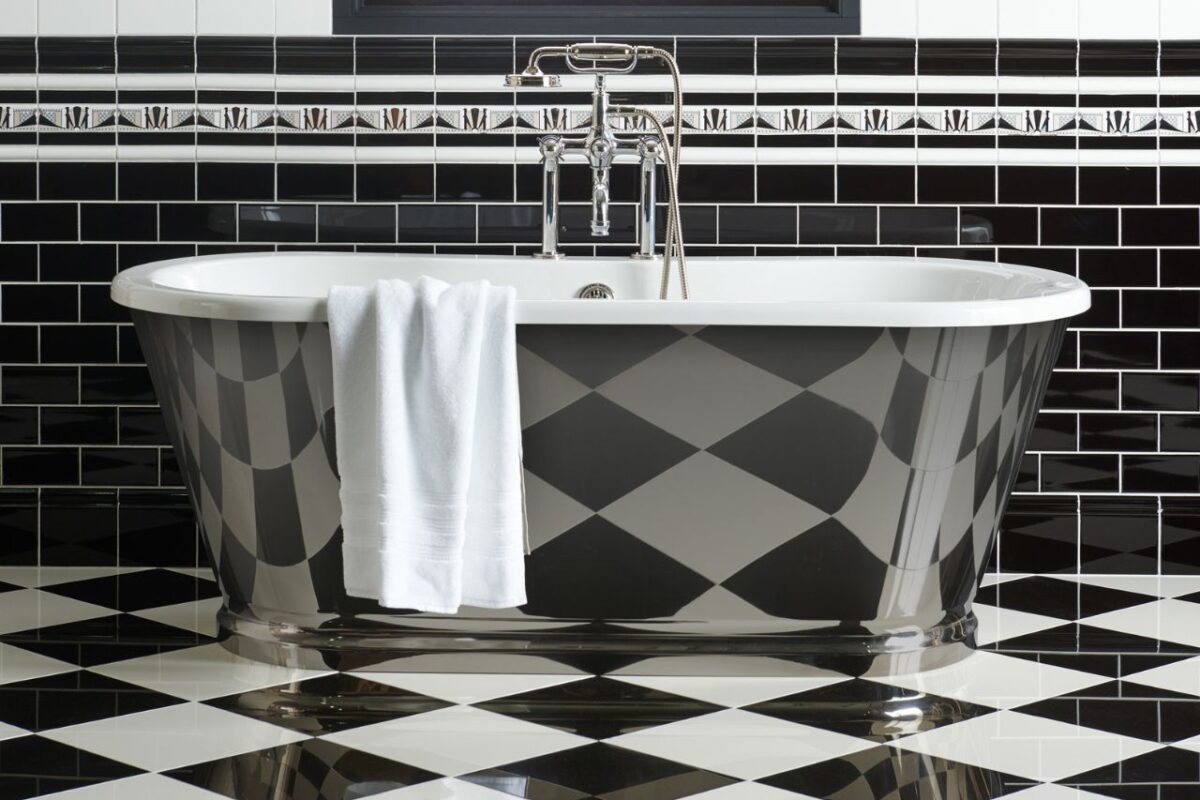
Wallpaper Choices For A Timeless Look
Wallpaper can bring a traditional bathroom to life when used effectively. Choose patterns that reflect period style, such as delicate florals, vertical stripes, or simple repeat prints seen in Victorian or Edwardian homes. Go for gentle colours like cream, powder blue, sage or dusky rose to keep the space light and in keeping with the classic look. When using wallpaper in a bathroom, it is essential to ensure it is suitable for areas with high moisture levels. Look for wallpaper that is labelled as moisture-resistant or vinyl-coated. These types are better for humid rooms and will last longer without peeling.
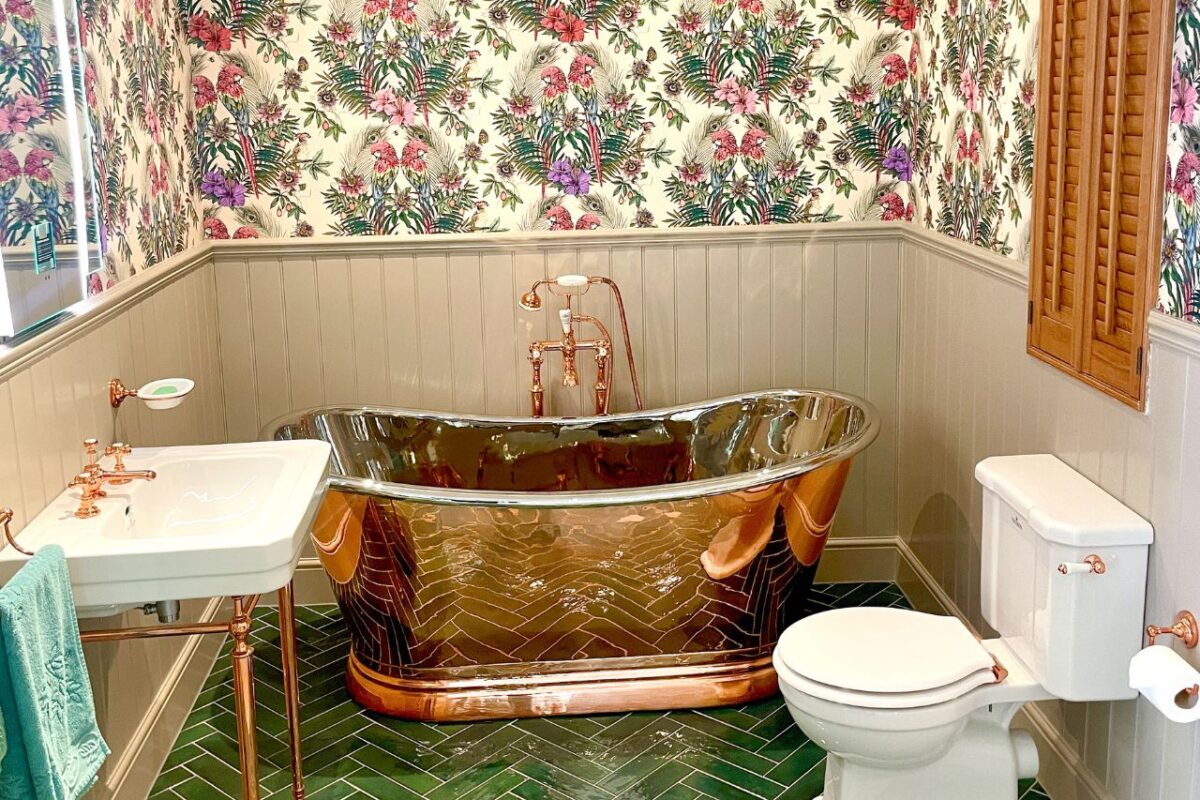
Combining Modern Function with Traditional Style.
A traditional bathroom can still incorporate modern features without compromising its overall look. For example, you can install up-to-date plumbing systems while using taps and fittings with a classic design. This allows the bathroom to function well on a day-to-day basis while maintaining its classic feel. It is also essential to make sure the room is waterproofed correctly and has good ventilation, especially behind wooden panelling or tiled walls. This protects the materials and helps keep the bathroom in good condition over time.
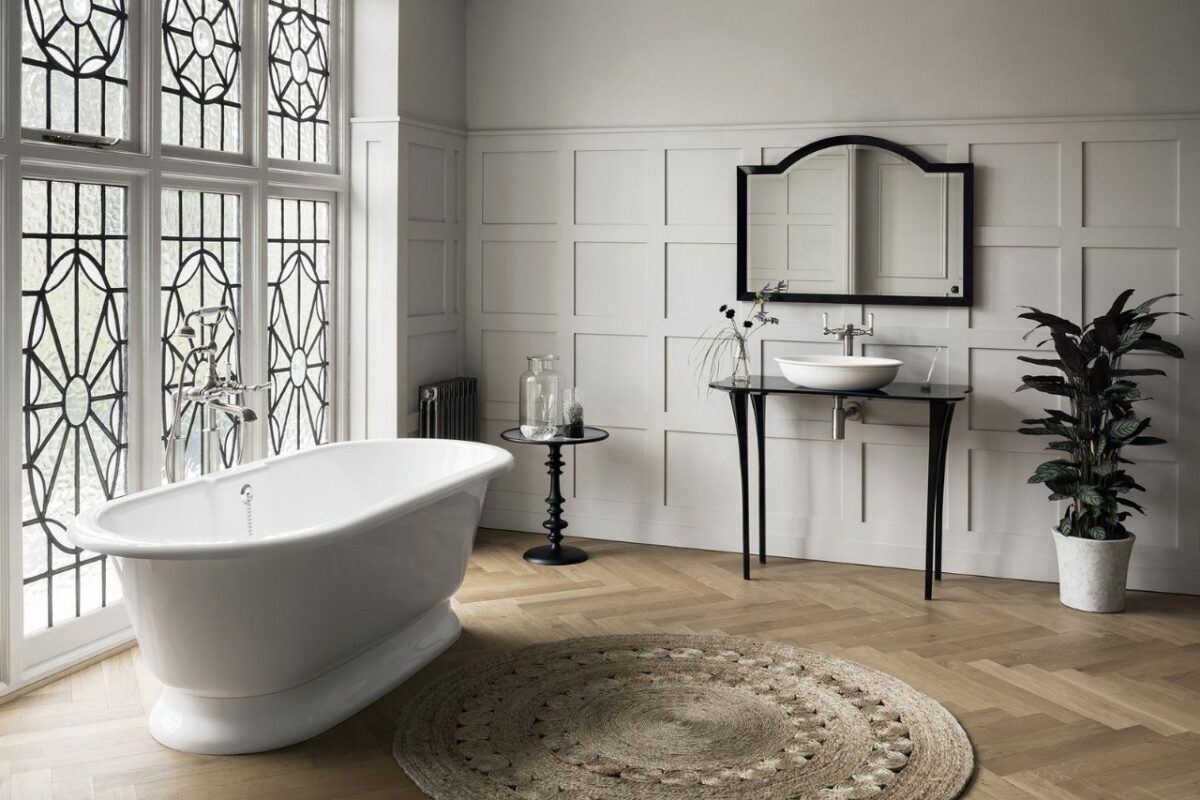
Conclusion
A traditional bathroom is a space that combines comfort, style, and lasting quality. By choosing classic materials, soft colours, and well-made fittings, you can create a room that feels calm and looks beautiful. It is also essential to ensure the space functions well for everyday use, with adequate storage, proper ventilation, and modern features that complement the traditional look. Whether you are updating an old bathroom or starting fresh, this style offers a timeless feel that will remain pleasing for years to come. There are numerous other luxury features you can incorporate into your traditional bathroom design. Visit our Perth showroom or Edinburgh showroom to explore more styles and designs.
